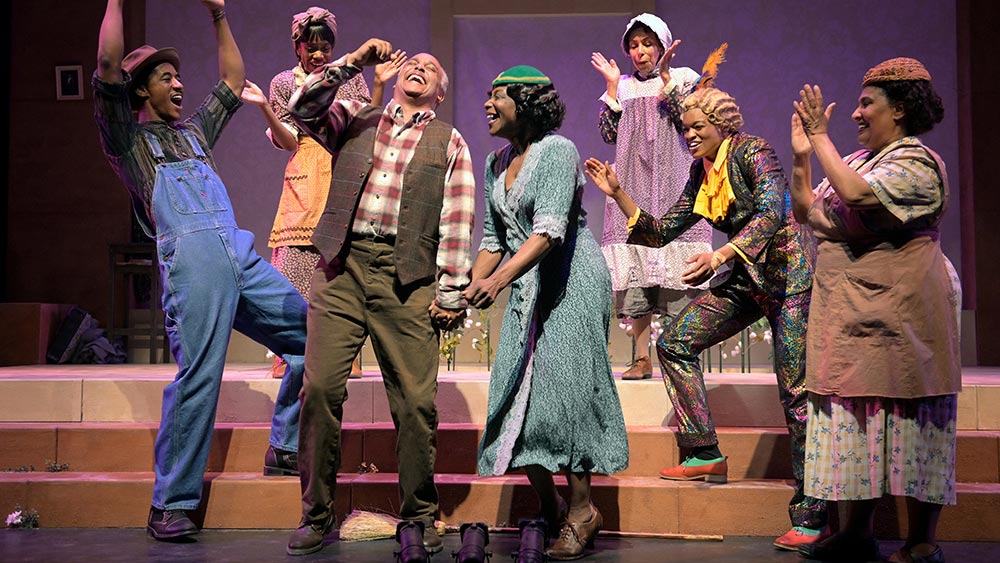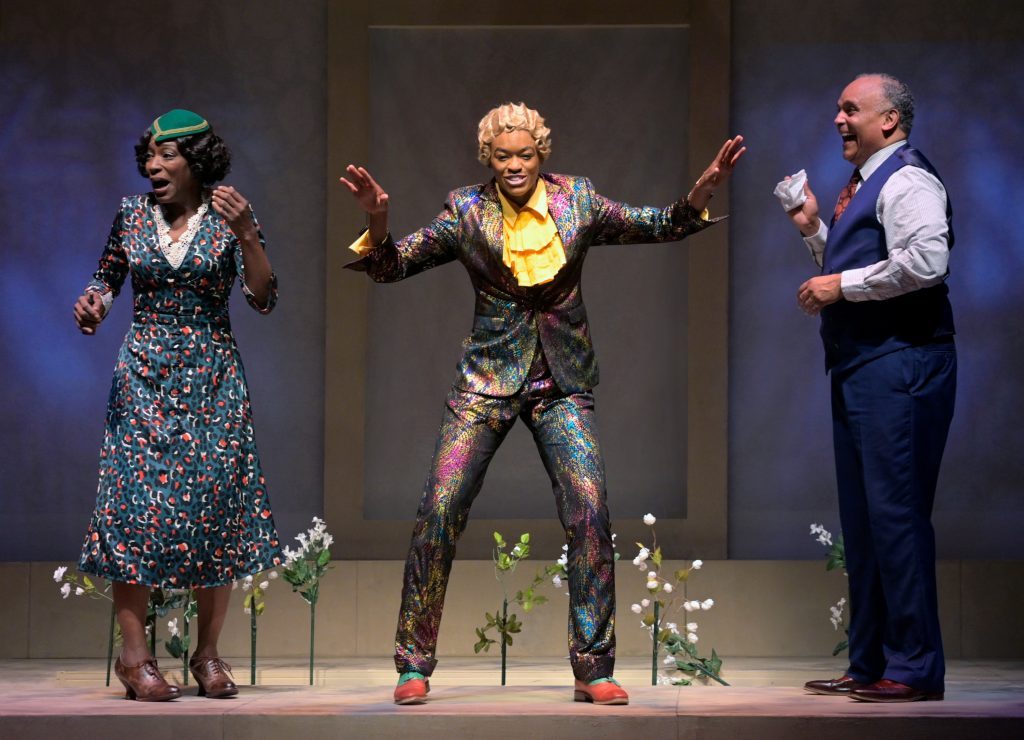
Joe Trace and his wife Violet tell two sides of the same story in “Jazz”, an adaptation of Toni Morrison’s 1992 novel, now in its west coast premiere at the Marin Theatre Company. It’s the story of their long, troubled marriage. But by play’s end, the couple seems prepared to let go of their differences. “It don’t matter how you see it or how I see it,” Joe (Michael Gene Sullivan) tells Violet (C. Kelly Wright) as they embrace in a moment of reconciliation. “We make it the way we want it.”
That’s a lovely, poetic approach to moving beyond the nuanced differences that arise in a couple’s individual recollections of their long ago youth. And it’s a nice description of the simultaneous counterpoint and harmony in the play’s namesake music—divergent solo riffs within a greater collaborative whole.
But it also feels like the ad hoc credo of a playwright, Nambi E. Kelley, who hasn’t quite settled on an artistic point-of-view and is shifting too much responsibility for making her work coherent onto its audience.
Its hard to tune in to the variations and echoes between Joe and Violet’s distant memories—Did they intially couple up out of romance or practicality? How were each of them affected by the childhood loss of their mothers?—when the actions of their recent past are so jarring: In the play’s early scenes, we learn that Joe, in his fifties, has had an affair with Dorcas, a 17-year-old Harlem neighbor (Dezi Soley), then shot her dead after she left him for a boy her own age. Violet, in a fury, arrives at Dorcas’ wake, knife in hand, and stabs the corpse.
While staged in an unsensational, almost ceremonial fashion by director Awoye Timpo, these acts of violence are difficult to set aside in one’s mind. All the more so because they go not just unpunished, but barely even noticed. There are no police investigations or social approbation. Violet even forms an unlikely post-mayhem friendship with Dorcas’ aunt Alice (Margo Hall), who seems bizarrely untroubled by the loss of her young charge.

One could argue that the lack of law enforcement speaks to white authorities turning a blind eye in 1920s Harlem, or that the nonplussed neighborhood reaction reflects a numbed-by-horror legacy carried by these descendants of recent slaves. But one would be making that argument based on prior study of American social history or Toni Morrison’s novel, not on information being clearly communicated from the stage.
Even when played two times—once through Joe’s eyes, once through Violet’s—a scene in which the couple’s rural Virginia home is destroyed by a white mob could easily be missed because it’s rendered so hastily and abstractly: After virtually no scene-setting or build-up, a single row of small flower pots is toppled on the stage. Kelley and Timpo expect this passing gesture to emotionally evoke an entire era of southern racism. It barely registers. Twice.
Dorcas’ vague account of a riot in which her parents were killed and Joe’s memory of a parade celebrating black soldiers returning home from WWI are also intended—but fail—to summon a broader cultural context for the more intimate stories in “Jazz.”
Marcus Shelby’s original score—incorporating jazz and its forebears, blues, country and gospel—is pleasant enough, but it’s presented as recorded background music and never feels integral to the action. While a few early lines of dialogue refer to jazz as “the music of the disorderly” and a source of moral decay, we never feel a powerful presence of music in the lives of the play’s characters. The occasional moments when they break into song feel like filler, not epiphany. Kimie Nishikawa’s modernist mausoleum of a set and Jeff Rowlings’ chilly James Turrell-like lighting effects feel disconnected from the play’s time period and folkloric texture.
While the Toni Morrison novel that inspired this production also has has a multi-voiced, focus-shifting, non-linear structure, a book allows its audience the freedom to revisit and reconsider ambiguous passages, to pause and parse meanings. For stage adaptations, the most confusing aspects of a book are often clarified. In “Jazz”, they’ve been amplified.
